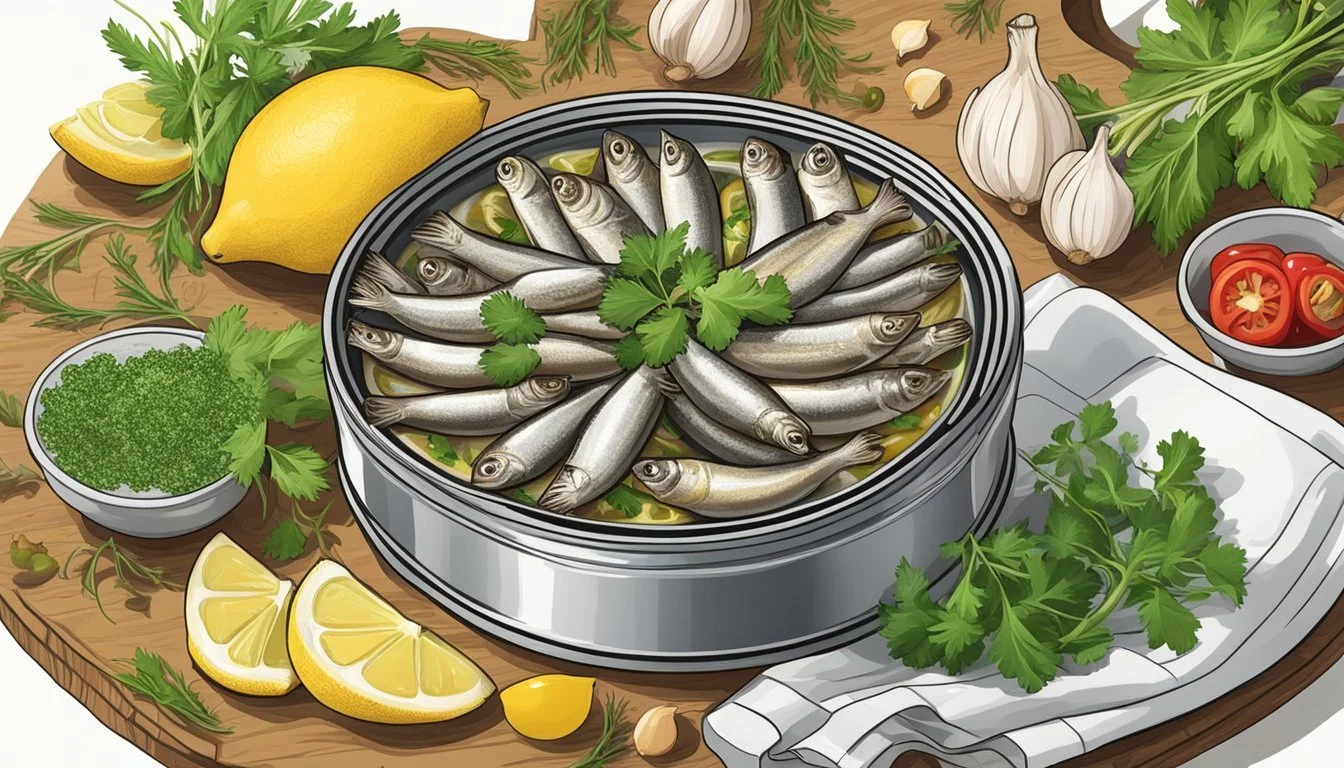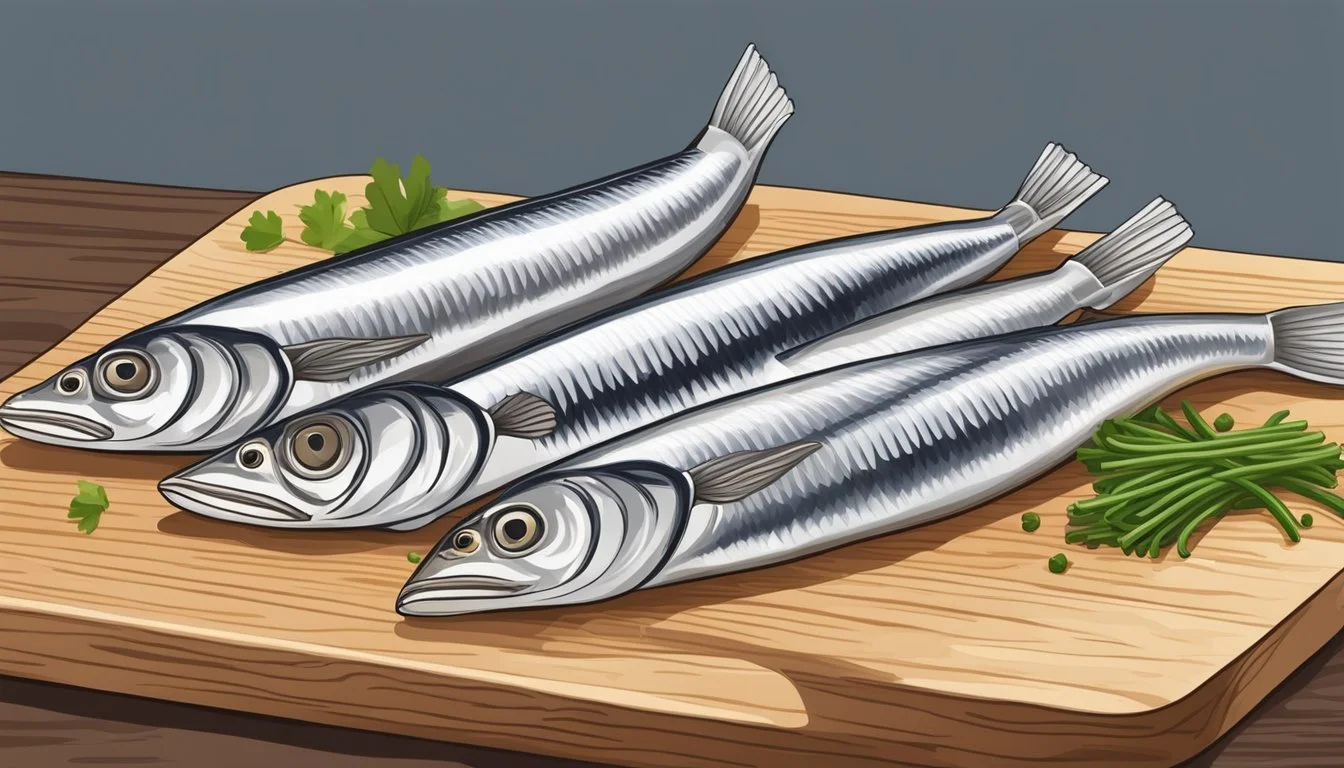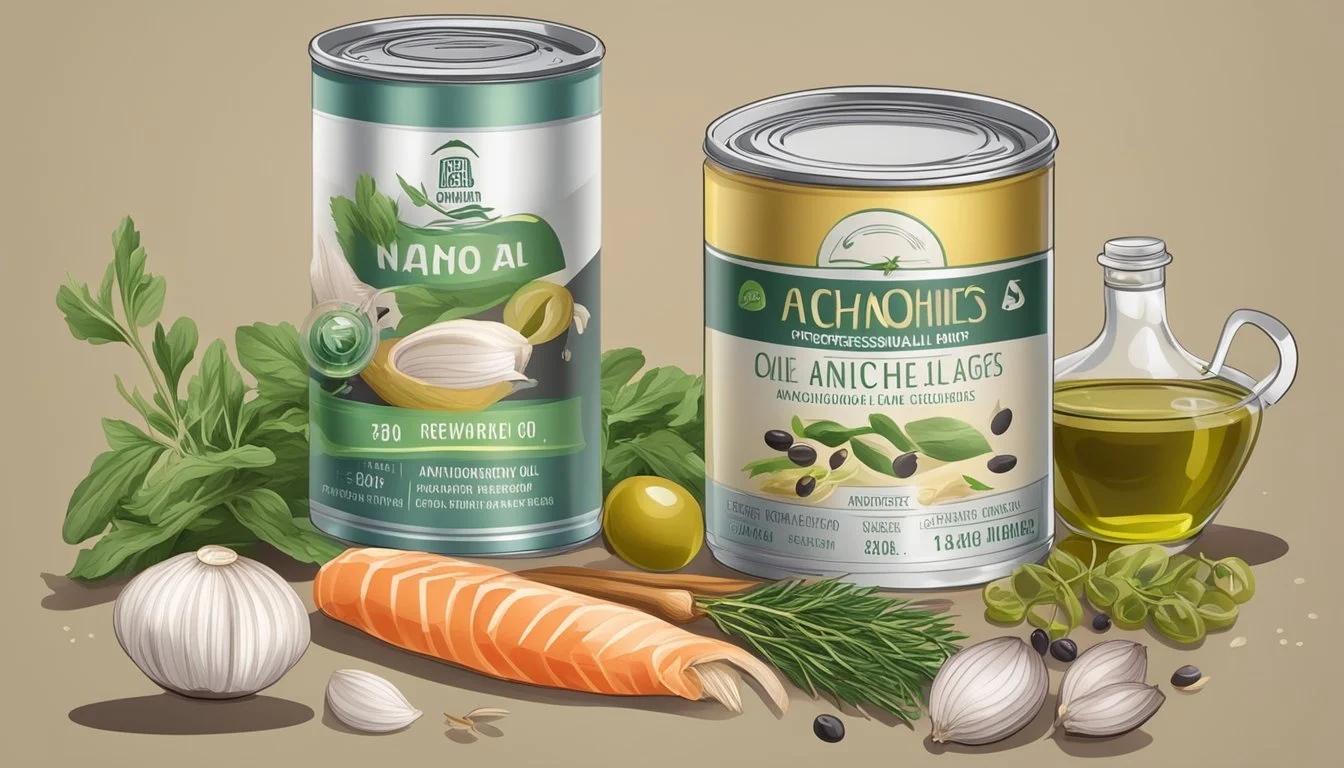Canned Anchovies Recipes for Bold Flavors
Unleash Umami in Your Dishes
Canned anchovies are a staple in pantries around the world and a key ingredient in numerous recipes that demand bold, savory flavors. These small fish are preserved through a curing process involving salt, which not only imparts a distinctive taste but also softens the proteins, making anchovies readily dissolvable when cooked. This allows them to blend seamlessly into dishes, enhancing depth without overpowering other ingredients.
The versatility of canned anchovies is evident in their ability to elevate simple recipes. Their intense umami characteristic can transform a basic pasta dish into a rich, complex experience with minimal effort. Due to their robust flavor profile, anchovies are often the unsung hero in sauces, dressings, and marinades, contributing a nuanced salinity that can balance and enrich the overall taste.
Employed correctly, canned anchovies can provide a foundation for exquisite meals without imparting an overly fishy taste. This aspect is crucial for those who may be hesitant about the inclusion of fish products in their cuisine. Whether anchovies are the star of the dish or used sparingly to add a punch of flavor, they offer a breadth of culinary opportunities for bold and sophisticated cooking.
Health Benefits of Canned Anchovies
Canned anchovies are a powerhouse of nutrition, offering a multitude of health benefits. They're not only a versatile ingredient but also contribute significantly to a balanced diet.
Nutritional Content:
Protein: Anchovies are a great source of protein, which is essential for muscle building and repair.
Omega-3 Fatty Acids: These small fish are rich in omega-3s, which support heart health by improving cholesterol levels.
Calcium: Essential for bone health, anchovies provide a good dose of calcium, an important mineral for maintaining strong bones.
Vitamins and Minerals: Anchovies are particularly high in:
Vitamin B3 (Niacin): This vitamin is crucial for converting food into energy and supports cardiovascular health.
Iron: Important for blood production, one serving of anchovies contains a significant portion of the daily value.
Other vitamins and minerals anchovies contain include selenium, a nutrient that plays a key role in maintaining a healthy immune system.
Low-Calorie Option:
Given their high nutrient density and low-calorie profile, anchovies are an excellent choice for those looking to maintain or lose weight, while still enjoying bold flavors.
Incorporating canned anchovies into meals can contribute to a nutrient-rich diet without extra calories, supporting overall health while enhancing the taste of various dishes. They are not only flavorful but also a beneficial component of any diet focused on health and wellness.
Selecting and Storing Canned Anchovies
When choosing canned anchovies, consumers should look for cans or jars that appear undamaged and have no visible signs of bulging or rust. The integrity of the packaging is crucial to ensure the safety and quality of the product inside. Ideal candidates are packed in high-quality oil, which helps preserve their flavor and freshness.
Once purchased, canned anchovies should be stored at room temperature, ideally between 50°F to 70°F (10°C to 21°C). The storage area should be cool and dark, such as a pantry or cupboard, away from heat sources like stoves or appliances. Do not expose them to air as it can degrade quality rapidly.
Storage Tips:
Before Opening:
Store in a cool, dark place.
Ensure temperature is consistent.
After Opening:
Transfer anchovies with their oil into an airtight container.
Refrigerate to extend shelf life.
Unopened: Last 3 to 5 years if stored properly.
Opened: Best consumed within 2 months when kept in oil and under refrigeration.
Freezing Option:
For long-term storage, anchovies can be frozen. Place them in an airtight container or sealable bag, and store in the coldest part of the freezer.
By adhering to these methods, the anchovies will maintain their distinct, salty flavor and proper texture, making them an excellent addition to numerous recipes. It is important that consumers use anchovies judiciously, adding bold flavors to dishes while cognizant of their storage needs.
Preparing the Anchovies for Cooking
Canned anchovies possess an intense umami flavor, making them an excellent ingredient to enrich various dishes. To prepare these tiny fish for cooking, they generally require a bit of prep work. As anchovies are stored in oil or salt, they may carry an overly salty taste. To mitigate this, they can be soaked in cold milk for approximately 30 to 60 minutes, which helps to mellow the salinity. After soaking, one must drain and gently pat the anchovies dry.
Removing the Backbone:
Lay the anchovy flat.
Gently press along the spine.
Lift to remove the bone, which contains myosin, a protein connected to muscle contraction.
To Store Opened Anchovies:
Ensure they are submerged in olive oil.
Refrigerate in an airtight container.
Consume within two months for best quality.
Incorporating anchovies into dishes can subtly or profoundly change flavor profiles:
For a subtle touch, adding a single minced anchovy fillet to a sauce or dressing imparts a savory depth.
For bold flavors, a more generous quantity may be desired.
Lastly, when cooking with garlic and olive oil, introducing minced anchovies can create a simple yet robust pasta sauce. The fish melts into the oil, imparting its umami richness throughout the dish, demonstrating a confidence in combining ingredients for maximal impact. Despite their size, canned anchovies are a powerhouse of flavor and a testament to the adage that a little goes a long way.
Classic Anchovy-Infused Recipes
Anchovy-infused recipes deliver bold flavors that can transform simple ingredients into unforgettable dishes. Known for enhancing depth and umami, anchovies are at the heart of many classic and inventive culinary creations.
Anchovy Pasta Delights
Italian pasta dishes often incorporate anchovies to achieve a savory depth. Spaghetti Puttanesca is a quintessential recipe that sings with the bold flavors of anchovies, tomatoes, capers, (What wine goes well with capers?) and olives. To master al dente pasta that clings to the sauce, cook spaghetti according to the package's instructions until it just resists the bite.
Sauces and Dressings with Anchovies
Anchovies dissolve effortlessly into sauces and dressings, providing a pungent flavor that pairs well with green salads and cooked pasta. A classic Caesar salad owes its distinctive taste to anchovy-based dressing, which combines mashed fillets with mayonnaise, lemon juice, and a hint of garlic.
Anchovy-Boosted Breakfasts
Breakfast dishes are invigorated with the addition of anchovies. Anchovy butter on toast is a simple yet powerful combination. To make it, blend softened butter with finely chopped anchovies and spread on warm toast, often accompanied by soft-boiled eggs.
Seafood Mains & Tapas
Anchovy fillets enhance seafood recipes like salmon en papillote, where they lend their savory note without overwhelming the dish. In Spain, anchovies are a staple in tapa (What wine goes well with tapas?), prepared as marinated fillets served alongside olives and cheeses.
Baking with Anchovies
Pizzas and flatbreads often feature anchovies as a key ingredient. Layer them on pizza dough with tomatoes, mozzarella, and olives before baking to introduce a salty, umami-packed flavor dimension.
Snacks and Appetizers
As appetizers, anchovies can be served in small, bite-sized portions. Marinate whole anchovies in olive oil, garlic, and parsley for a zesty snack or skewer them with capers and cocktail onions for a savory appetizer.
Side Dishes Enhanced by Anchovies
Anchovies elevate side dishes like sautéed kale or green beans, imparting a salty richness. For a Mediterranean touch, add minced anchovies to a warm potato salad dressed with olive oil, lemon, and fresh herbs.
Creative Twists on Classic Recipes
When traditional meets innovative, the humble canned anchovy transcends its modest beginnings, infusing recipes with depth and asserting a boldness that can transform the ordinary into something spectacular.
Global Inspirations with Anchovies
The inclusion of anchovies stretches across cuisines, contributing intense flavor and umami. Korean dishes frequently utilize dried anchovies in conjunction with soy sauce to create a base that's both savory and slightly sweet. For example:
Gukbap: A comforting soup where anchovies enrich the broth, paired with rice and often accompanied by beef or chicken for a heartwarming meal.
Bokkeum: Stir-fried dried anchovies combined with a spicy and sweet sauce, perfect as a side dish.
Innovative Pairings
Canned anchovies can boldly enhance more than just the expected Italian pasta dishes. Their versatility in pairing with various ingredients allows for innovative culinary creations, such as:
Steak with Anchovy Butter: Melt anchovy paste into butter with herbs and spices to create a flavorful steak topping.
Anchovy-Spiced Chicken: Blend anchovies with a mix of spices to marinate chicken, introducing a rich layer of flavor.
Toasty Anchovy Sandwiches: Elevate sandwiches by spreading anchovy paste on toast, topped with arugula or fresh vegetables.
Whether one is whisking anchovies into pasta sauces or squeezing lemon juice over an anchovy-garnished dish, these bold twists promise to invigorate classic recipes with a new zest.
Homemade Anchovy Specialties
The transformative power of canned anchovies in enhancing homemade specialties is often underestimated. High in umami, these little fish provide depth and complexity to an array of condiments and butters.
DIY Anchovy Butter and Pastes
One can create a flavor-packed Anchovy Butter by combining softened butter with minced canned anchovies, a touch of garlic, and Parmesan cheese for added richness. Using a food processor helps to mix these ingredients evenly. This compound butter is excellent melted over steak or whisked into sauces for a burst of savory goodness.
For a versatile Anchovy Paste, a cook may process canned anchovies along with garlic, olive oil, and a pinch of sugar to balance the saltiness. It can then be used to bolster the background flavor in dressings, spreads, or as a base for more complex sauces.
From Scratch: Anchovy Condiments
When it comes to homemade condiments, anchovies are a secret weapon. A vibrant Anchovy Vinaigrette requires only that one emulsifies canned anchovies with olive oil, vinegar, minced garlic, and a bit of mustard, creating a bold, punchy dressing ideal for green salads or roasted vegetables.
For a thicker sauce, chefs may craft an Anchovy-Mayonnaise, combining the fish with egg yolks, a squeeze of lemon for brightness, olive oil, and a whisper of Parmesan to create a rich condiment that pairs well with crisp fries or as a spread on hearty sandwiches.
Anchovy Pairings and Wine Suggestions
When incorporating canned anchovies into recipes, their bold flavors pair exceptionally well with a variety of wines, often enhancing the overall dining experience. Choosing the right wine is crucial to complement the intensity and the briny, umami-rich character of anchovies.
Crisp White Wines: A classic combination involves pairing anchovies with crisp, bright white wines. These wines, often with a zesty acidity, balance the saltiness of anchovies with their fresh, citrus notes.
Italian Vermentino: With its herbal undertones, Vermentino from the coastal regions of Italy offers a harmonious match.
Manzanilla or Fino Sherry: A well-chilled sherry brings a nutty flavor that melds well with the savory anchovy.
Dishes & Complementing Wines: Anchovy-based Italian sauces, bolstered with olives and parsley, often find their match in regional Italian wines. Serving a medium-bodied white wine, or even a lighter red, can highlight the nuances of both the dish and the wine.
Sicilian Whites: Wines like Greco or Fiano can withstand the strong flavors of anchovy-laden sauces.
Light Chianti: The subtle tannins cut through the richness for red wine enthusiasts.
Temperature Matters: To ensure the best tasting experience, serve wines at their ideal temperatures. Whites should be chilled, while light reds can be slightly cooler than room temperature.
Here is a simple guide to wine temperatures for anchovy pairings:
Wine Type Ideal Temperature Crisp White Wine 8-12°C (46-54°F) Manzanilla/Fino Sherry 7-10°C (45-50°F) Light Red Wine 12-16°C (54-61°F)
Remember, the goal is to complement and not overpower the anchovy's distinctive flavor. With these suggestions, diners can confidently select a wine that elevates their anchovy-centric dish.
Advanced Cooking Techniques
Canned anchovies possess potent flavors due to a meticulous curing process where salt not only imparts its taste but also breaks down proteins in the fish, rendering them more pliable. Chefs can use this characteristic to their advantage when aiming for depth of flavor in a dish.
A chef seeking to moderate the salty profile may soak anchovies in cold milk for 30 to 60 minutes, which helps to extract excess salt. After soaking, it's vital to drain and pat the anchovies dry before incorporating them into recipes.
Simmering in a skillet is another advanced technique to blend the anchovy's boldness into dishes subtly. During simmering, the anchovies can disintegrate and infuse their flavor, especially in sauces and dressings. Here is how one might proceed:
Skillet:
Heat the skillet, add a touch of olive oil, and lower the heat to medium.
Add minced anchovies, stirring until they dissolve and create a richly flavored base.
To further customize the flavor, chefs can integrate sugar and spices. A pinch of sugar can balance the savory notes, while spices like chili flakes or black pepper might provide a welcomed complexity.
Recipe Twist
Ingredient Preparation Anchovies Finely mince Sugar A pinch to counteract saltiness Spices According to taste; add during simmering
Anchor recipes like pasta or vinaigrettes feature anchovies prominently, and their bold flavor is a versatile foundation that welcomes creative culinary experimentation.
Nutritional Information and Dietary Considerations
Anchovies are a densely-packed source of nutrients, offering an array of vitamins and minerals despite their small size. They are particularly noted for their high protein content and the presence of omega-3 fatty acids, which are beneficial for heart health. Here is a brief breakdown of their nutritional components:
Calories: A small serving of about five fillets can contain roughly 42 calories.
Protein: These fish are protein-rich, with a modest serving providing around 5.8 grams.
Fat: Anchovies contain healthy fats, predominantly omega-3 fatty acids, with around 1.9 grams per serving.
In terms of minerals:
Calcium: Anchovies provide calcium which is essential for bone health.
Iron: Important for blood health, iron is also found in these small fish.
Zinc: This nutrient, crucial for the immune system and metabolism, is present in anchovies.
For those attentive to dietary intake, anchovies can be a strategic addition to meals. They are known for their umami flavor, which is the savory taste that can enhance the palatability of various dishes without the need for additional salt, making them a favorite in health-conscious cooking.
However, it's important to note that anchovies are naturally high in sodium due to the curing process they undergo. This should be considered in dietary planning, particularly for those monitoring their salt intake.
Parsley, often used as a garnish with anchovy-based dishes, not only adds a fresh, herbaceous note but also provides nutritional benefits such as vitamin C and iron.
When incorporated into recipes, anchovies can contribute to a nutrient-rich diet that supports overall health while providing a depth of flavor to a variety of dishes.
Sustainability and Ethical Sourcing of Anchovies
The fishing practices for anchovies have a direct impact on marine ecosystems. Ethical sourcing is vital to ensure that anchovy populations remain healthy and that the marine environment is protected for future generations. When sourcing canned anchovies, sustainable seafood practices become a determining factor for preserving the species and its habitat.
Key Considerations for Sustainable Sourcing:
Fishing Methods: Using methods that reduce bycatch and habitat damage.
Quota Systems: Adhering to catch limits to prevent overfishing.
Certifications: Looking for products with sustainability certifications, such as the Marine Stewardship Council (MSC).
Consumers play a role by preferring brands that prioritize the environment, creating demand for responsibly sourced seafood. Canned anchovies are a staple product that can either contribute to sustainability or perpetuate harmful practices based on the choices made by consumers and companies.
Sustainable Brands Practices:
Transparency in sourcing,
Investment in sustainable fishing technologies,
Support for local fisheries that engage in responsible practices.
It is crucial for the industry to monitor the health of anchovy populations and the environmental impact of fishing methods. Stakeholders such as government bodies and industry players must collaborate to enforce regulations and promote sustainable practices across the supply chain. This collaborative approach ensures the availability of canned anchovies while maintaining the integrity of marine ecosystems.










